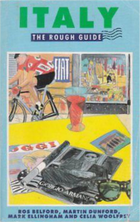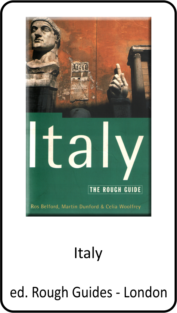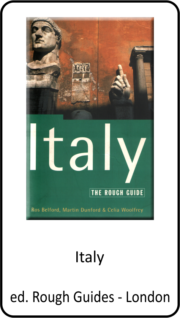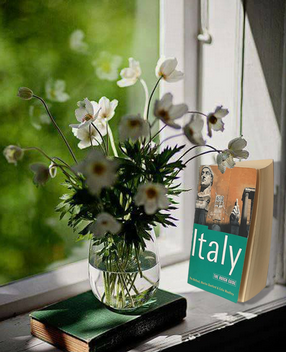 Le Rough Guides sono guide dettagliate e aggiornate dei luoghi di interesse artistico, storico e ambientale di tutti i paesi del mondo. Sono state definite le "più culturali" per l'attenzione dedicata non solo ai monumenti e ai capolavori del passato ma anche alla segnalazione di tutte le manifestazioni culturali del momento, dai festival letterari e musicali alle mostre e alle rassegne di ogni tipo. Nella parte pratica sono segnalati gli alloggi migliori in rapporto alla qualità e al prezzo, i ristoranti di ogni categoria con buona cucina, i locali più divertenti e interessanti di ogni città. Vi sono poi numerose cartine e piante, con le indicazioni della strade principali, dei mezzi di trasporto, dei collegamenti per raggiungere i siti e i monumenti di cui si parla nel testo. Non mancano le segnalazioni di attività sportive, quali escursioni, immersioni e altro.
Le Rough Guides sono guide dettagliate e aggiornate dei luoghi di interesse artistico, storico e ambientale di tutti i paesi del mondo. Sono state definite le "più culturali" per l'attenzione dedicata non solo ai monumenti e ai capolavori del passato ma anche alla segnalazione di tutte le manifestazioni culturali del momento, dai festival letterari e musicali alle mostre e alle rassegne di ogni tipo. Nella parte pratica sono segnalati gli alloggi migliori in rapporto alla qualità e al prezzo, i ristoranti di ogni categoria con buona cucina, i locali più divertenti e interessanti di ogni città. Vi sono poi numerose cartine e piante, con le indicazioni della strade principali, dei mezzi di trasporto, dei collegamenti per raggiungere i siti e i monumenti di cui si parla nel testo. Non mancano le segnalazioni di attività sportive, quali escursioni, immersioni e altro.L'autrice era l'unica loro collaboratrice italiana.
Ecco un piccolo estratto di quello che avevo scritto nella guida in inglese "Italy - Rough Guides"
West of Turin: The Susa and Chisone valleys
The main route to France from Turin runs through the Susa Valley, passing the region's main ski resorts. The one real sight, the Sacra di San Michele, a forbidding fortified abbey anchored atop a rocky hill, is an easy day-trip from Turin. Susa itself, reached by a branch of the rail line, was once a Roman town and is now a provincial town, a pleasant stopover.
Sacra di San Michele
Closest town to the Sacra di San Michele is AVIGLIANA, half an hour by train from Turin and connected with the abbey by bus. Then, if you don't mind walking, you can push on to the next stop on the train route, SANT'AMBROGIO, a small village at the foot of San Michele's hill, from where it's a steep 60- to 90-minute hike to the abbey.
The walk is worth it, both for the views and for the opportunity it affords to soak up the atmosphere that surrounds the glowering abbey, reached by a long flight of stairs hewn into the rock – the Scalone dei Morti (“Stairs of the Dead”). Corpses used to be laid out here for local peasants to come and pay their respects. The abbey buildings has a Romanesque entrance arch carved with signs of the zodiac and the abbey church has a Gothic-Romanesque style.
Susa
A further 25km down the valley, SUSA is a possible stopover if it's late.While most of Italy was under the Romans, Susa and western Piemonte remained in the hands of the Gauls. The best known of its Gaulish leaders, Cottius, was much admired by the Romans, with whom he reached a peaceful arrangement, and there are a handful of Gaulish/Roman remains scattered around the town centre, notably in Piazza San Giusto, where there's a redoubtable defensive gate. The adjacent Romanesque Cattedrale has a fine campanile, but its most interesting features are the external frescoes – a Crucifixion and an Entry into Jerusalem. Just above the piazza, Cottius erected the Arco di Augusto in honour of the Roman emperor, its top decorated with a processional frieze and giving views down into a small park laid out around the remains of some Roman Baths. For a complete round-up of the town's ancient origins, look in on the museum housed in the crumbling medieval castle above the town.
From Susa you can make an excursion to the abbey of Novalesa, 10km away at the foot of Rocciamelone in the Cenischia Valley, close by the French border. The church here is a relatively recent, eighteenth-century structure, but part of the cloister and walls date back to the eighth century, while the four chapels, one of which is decorated with frescoes, was built in the tenth century.
In the opposite direction, southeast, at the end of the Chisone Valley, PINEROLO is worth a stop. It's a small town with a medieval centre that was for centuries the seat of the Acaia princedom, precursors of the House of Savoy. You can walk around the frescoed courtyard of their palace, halfway up the hill, where you'll also find the church of San Maurizio, burial place of the Acaia princes, decorated with fifteenth-century frescoes. In the town centre, there's a Gothic Duomo and the huge covered Cavallerizza Caprilli or parade ground for horses. The Museo della Cavalleria is one of only two such museums in Italy and gives a good sense of the town's glory days, with displays relating to the prestigious former cavalry school of Pinerolo. There are lots of objects – uniforms, arms and spurs, trophies and documents, even a stuffed horse – pertaining to the brilliance of the horsemen and their steeds, as well as displays of bridles, horse-shoes, tools and the like, and a section devoted to the tanks and jeeps that have come to replace horses in the military.
Skiing: the Piemontese resorts
Close to the French border are Piemonte's principal purpose-built ski resorts – well used by British tour operators and really far cheaper if you take a package. The snow is sometimes unreliable, although Sestriere has lately protected itself against the weather by installing Europe's largest artificial snow-machine.
Of the main three resorts, BARDONECCHIA is a weekenders' haunt, a modern resort with small chalet-style hotels. 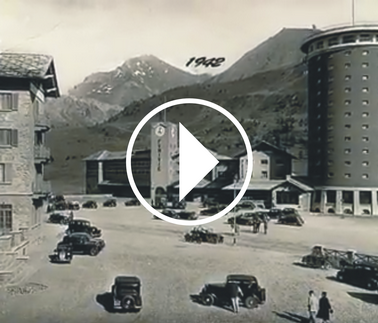 SAUZE D'OULX, a little way south, is known as the Benidorm of the Alps and attracts hordes of youngsters who treat skiing as a hangover cure. SESTRIERE was the resort of the Fiat baron, Agnelli, though it's now very overdeveloped. Agnelli conceived of an aristocratic mountain retreat, favoured by the young and beautiful, though he was not unaware of the fast-growing tourist industry. Nowadays, the reality is a bland resort that dribbles over a bleak mountain, dominated by two cylindrical towers, both now owned by Club Med.
SAUZE D'OULX, a little way south, is known as the Benidorm of the Alps and attracts hordes of youngsters who treat skiing as a hangover cure. SESTRIERE was the resort of the Fiat baron, Agnelli, though it's now very overdeveloped. Agnelli conceived of an aristocratic mountain retreat, favoured by the young and beautiful, though he was not unaware of the fast-growing tourist industry. Nowadays, the reality is a bland resort that dribbles over a bleak mountain, dominated by two cylindrical towers, both now owned by Club Med.
Saluzzo and the western valleys
A flourishing medieval town, and later the seat of one of Piemonte's few Renaissance courts, SALUZZO, 57km south of Turin, retains much of its period appeal. Flaking ochre-washed terraces and Renaissance houses with painted trompe l'oeil landscapes line stepped cobbled streets climbing up to a castle, now a prison. A pleasant place to stay and wander, the town has the added attraction of bus services which make it a convenient base for excursions into the Po, Varaita and Maira valleys, which cut through the foothills of the Monviso mountain towards France.
There are a few things around town worth seeing. Just below the castle, the Gothic church of San Giovanni has a number of thirteenth- and fourteenth-century frescoes and the tomb of the leading light of Renaissance Saluzzo, Marchese Ludovico II, anachronistically depicted like a medieval knight beneath a fancily carved canopy. Close by, the Gothic Casa Cavassa is a fifteenth-century palace with an arcaded courtyard that doubled as home for one of Ludovico's ministers and now houses the town's Museo Civico. Inside are period furniture and paintings, including the gorgeously gilded Madonna della Misericordia, with the Madonna sheltering Ludovico, his wife and the population of Saluzzo in the folds of her cloak.
Just to the south of Saluzzo, a five-minute bus ride from outside the train station, there's the Castello di Manta – a medieval fortress that was transformed into a refined residence by the Saluzzo marquises in the fifteenth century. Though from the outside it's as plain and austere as Saluzzo's castle, it's worth visiting for the late-Gothic frescoes in the Baronial Hall. One of these illustrates the myth of the fountain of youth, elderly people processing towards the magical waters while others impatiently rip off their clothes to plunge in. The other, the Nine Heroes and Nine Heroines, depicts idealized chivalrous courtiers and exquisite damsels, with china-pale faces and elaborate costumes, standing beneath stylized trees with coats of arms hanging from the branches.
Bibliografia
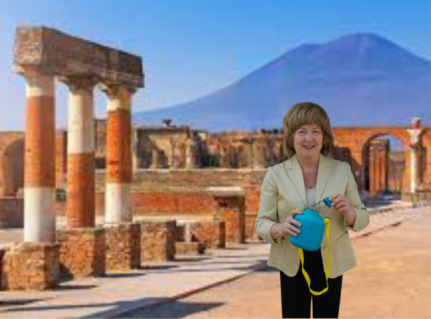
Recensioni



